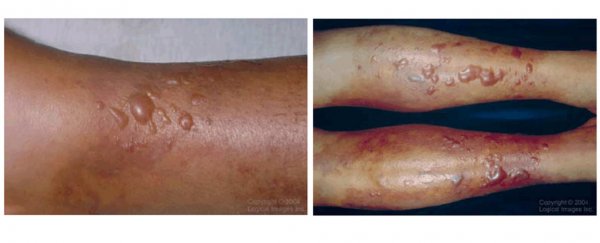Don't go in the water.
That's been the warning from public health experts for weeks in the wake of hurricanes Irma and Harvey, which left Texas and Florida strewn with millions of gallons of sewage and virtually covered in bacteria.
Now, their words of warning perhaps ring more strongly: Earlier this week, a woman in Texas died from a horrific infection caused by what is commonly called "flesh-eating" bacteria.
The New York Times reported that the woman, 77-year-old Nancy Reed, had previously fallen and broken her arm inside a flooded house in Houston, enabling bacteria from the floodwaters to seep into the wound.
It's unclear what bacteria were the culprit, but Rachel Noble, a professor of marine biology at the University of North Carolina at Chapel Hill, told Business Insider that she suspects it may have been Vibrio, a marine microbe that poses a rare but potentially deadly risk to anyone with an open wound.
"I have very little information to go on, but the speed with which she became severely ill, and the symptoms and descriptions match," Noble said.
Floodwaters in Florida and Texas are plagued by bacteria from two sources: Sewage systems, which have been overwhelmed by flooding, and the open ocean, which has been pulled into urban areas by the storm.
While microbes found in sewage can make you sick when ingested, it's the marine microbes that Noble said people should be the most concerned about.
In the wake of Hurricane Katrina, five people died and 22 lost limbs as a result of Vibrio infections.
The biggest concern for these infections? "Open wounds and scrapes," Noble said.
"If people with those are exposed to floodwaters and things that came in contact with flood waters, they need to be vigilant … they need to be seen, and they need to not sleep on the wounds," Noble said. "These things can progress over a 10 hour period to a point of no return requiring amputation."
Noble recommends that anyone who comes into direct contact with floodwater and experiences infection-like symptoms keeps a close eye on any open wounds. She also advises looking out for any areas that get "hot and angry," or red and raised. Symptoms like fever and chills can also be a warning sign for Vibrio infection, she said.
Other floodwater contamination risks include industrial chemicals and solvents, as well as tetanus, an infection caused by bacteria in soil, dust, and manure that can enter the body via a cut or puncture wound.
Richard Bradley, the chief of emergency medical services and disaster medicine at the University of Texas's McGovern Medical School, told Time that because the bacterial count in floodwater gets so high, the chance of getting a skin infection is serious.
"Floodwater mixes with everything below it," he said. "If it covers a field with pesticides, it picks up the pesticides. It can also carry animal waste from fields and forests."
Yet another problem in flooded areas is unexpected wildlife, since snakes, insects, and other wild animals can be drawn to the water or swept up in it.
"Storm activity definitely increases the potential for snakebite as the snakes get flooded out and seek higher ground," Bryan Fry, an expert on venomous snakes at the University of Queensland in Australia, told The Washington Post.
Other dangers persist even after floodwaters recede, since wet environments in homes and buildings are ideal for mould. In the wake of Hurricane Katrina in 2005, close to half of all inspected homes had visible mould, according to the CDC. Mosquitoes and other pests are also attracted to standing water.
Regardless of where you are, the ways to keep yourself safe are the same: ensure you've gotten your vaccinations, wash your hands frequently, and let your doctor know if you have any cuts or open wounds that have come into contact with potentially dangerous water.
This article was originally published by Business Insider.
More from Business Insider:
